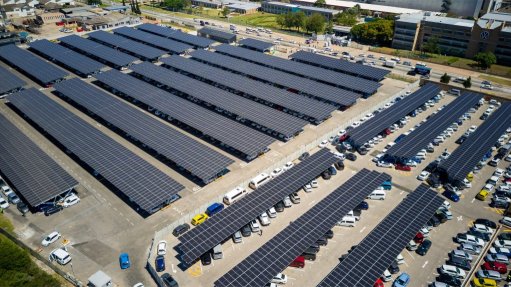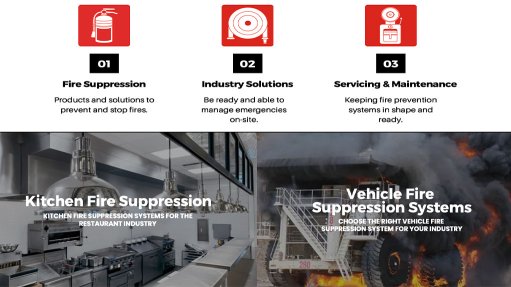Hydrogen electrolyser capacity expected to increase by 143% over two years
Global hydrogen electrolyser supply capacity is expected to increase by 143% over the next two years, after having increased by 103% from 2022 to 2023, the ‘Hydrogen Electrolyser Supplier’ report, published by US- and China-based clean energy services and advisory company Clean Energy Associates (CEA) this week, states.
Suppliers are expanding electrolyser production capacity rapidly to meet market demand and six suppliers have a yearly production capacity of more than 1 GW. From 2022, suppliers began to rapidly scale up their manufacturing capacity to the multi-gigawatt level, the report outlines.
"[Hydrogen electrolyser] suppliers include long-established companies with decades of experience in water electrolysis technology, as well as newer entrants that are leveraging their manufacturing scale and know-how in synergistic industries to quickly set foot in the electrolyser landscape," the CEA says.
Supplier optimism and increasing order volumes are fuelling strong growth. Additionally, new players are starting to chase incumbents by rapidly growing revenue in their green hydrogen businesses, the report adds.
Further, China, Europe and the US will continue to lead in electrolyser manufacturing capacity, driven by their relatively established domestic value chains, geopolitical energy needs and cost advantages.
China, Europe and the US will lead in electrolyser growth, but the rest of Asia and Africa will become players in the next four years, the report states.
In terms of electrolyser technologies, alkaline electrolyser technology dominates, accounting for 66% of global capacity, with proton exchange membrane (PEM) technology accounting for 17.6%, solid oxide electrolysis cell (SOEC) technology for 16.2% and anion exchange membrane (AEM) technology for only 0.2% of supplier capacity.
The top five alkaline electrolyser suppliers are leading in the gigawatt-scale capacity range, and more than 70% of alkaline electrolyser suppliers are located in China.
About 80% of PEM electrolyser manufacturing capacity can be attributed to four suppliers, and most PEM manufacturing capacity is concentrated in the US and Europe.
Few suppliers offer multiple technologies.
Further, solid oxide technology company Bloom Energy dominates the SOEC capacity, with 2 GW/y of electrolyser production capacity.
AEM electrolyser technology company Enapter remains the only AEM supplier with limited capacity, CEA says.
Meanwhile, alkaline electrolyser has the highest technology maturity of the four technologies mentioned in the report. Alkaline technology also has a relatively simple stack and system design and can have a large size for a single stack. Although the technology has comparatively low current density, it does offer a lower price.
PEM is a mature technology that can have small and compact stack sizes and high current density. However, the technology relies on precious metals catalysts. They are fast on startup and can manage high operation pressure, although the technology does come at a high price, CEA says.
The hydrogen production capacity of a PEM single stack is much smaller than that of an alkaline stack, but the average direct current energy consumption of the two technologies is similar at 4.5 kWh/m3 of hydrogen.
PEM electrolysers generally have a wider working load range than alkaline electrolysers, but the average PEM stack capacity is 200 m3/h of hydrogen, with the largest commercially available stack being 500 m3/h.
In comparison, most alkaline electrolyser products have a capacity of 1 000 m3/h, and all the Chinese alkaline electrolyser suppliers can manufacture large-scale electrolyser stacks.
Meanwhile, AEM is an emerging technology that combines the advantages of alkaline and PEM, although it currently has a short life of membranes, the report notes.
Further, SOEC is an emerging technology that offers high efficiency, although high-value heat is needed and there are high upfront costs.
The small sizes of SOEC and AEM electrolysers stacks make them complex to integrate into large systems and there are a limited number of suppliers.
However, although the stack sizes for SOEC and AEM technologies are very small, they can in theory achieve a low mass production cost owing to highly automated production processes.
Further, SOEC has a very low level of energy consumption, below 3 kWh/m3, which can be lowered further through the use of waste heat for steam creation, the CEA report states.
Article Enquiry
Email Article
Save Article
Feedback
To advertise email advertising@creamermedia.co.za or click here
Comments
Press Office
Announcements
What's On
Subscribe to improve your user experience...
Option 1 (equivalent of R125 a month):
Receive a weekly copy of Creamer Media's Engineering News & Mining Weekly magazine
(print copy for those in South Africa and e-magazine for those outside of South Africa)
Receive daily email newsletters
Access to full search results
Access archive of magazine back copies
Access to Projects in Progress
Access to ONE Research Report of your choice in PDF format
Option 2 (equivalent of R375 a month):
All benefits from Option 1
PLUS
Access to Creamer Media's Research Channel Africa for ALL Research Reports, in PDF format, on various industrial and mining sectors
including Electricity; Water; Energy Transition; Hydrogen; Roads, Rail and Ports; Coal; Gold; Platinum; Battery Metals; etc.
Already a subscriber?
Forgotten your password?
Receive weekly copy of Creamer Media's Engineering News & Mining Weekly magazine (print copy for those in South Africa and e-magazine for those outside of South Africa)
➕
Recieve daily email newsletters
➕
Access to full search results
➕
Access archive of magazine back copies
➕
Access to Projects in Progress
➕
Access to ONE Research Report of your choice in PDF format
RESEARCH CHANNEL AFRICA
R4500 (equivalent of R375 a month)
SUBSCRIBEAll benefits from Option 1
➕
Access to Creamer Media's Research Channel Africa for ALL Research Reports on various industrial and mining sectors, in PDF format, including on:
Electricity
➕
Water
➕
Energy Transition
➕
Hydrogen
➕
Roads, Rail and Ports
➕
Coal
➕
Gold
➕
Platinum
➕
Battery Metals
➕
etc.
Receive all benefits from Option 1 or Option 2 delivered to numerous people at your company
➕
Multiple User names and Passwords for simultaneous log-ins
➕
Intranet integration access to all in your organisation


















